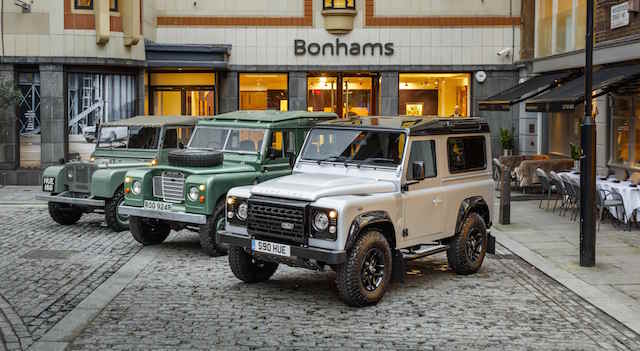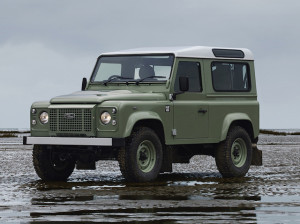
The last shipment of Land Rover Defenders has arrived in New Zealand, roughly a month out from the day in January when the British company stops building the workhorse four-wheel drive.
The largely hand-built Defender no longer meets new emissions and safety laws and will be replaced by an all-new Defender in 2018.
NZ agents Motorcorp Distributors were allocated 17 current models of the iconic 4×4 as a last hurrah. “We could have sold a hundred,” said general manager Stephen Kenchington.
The 17 were made up of nine green-coloured Heritage and eight orange Adventure models. Most went to owners in the South Island.

Heritage honours the Grasmere green colour of the original 1948 Land Rover, a paint used by the Royal Air Force during Word War II but surplus after it. Adventure is the colour of more modern models used in the G4 Challenge, a global off-road competition that replaced the famed Camel Trophy.
Land Rover has built more than two million models since 1948, the 2,000,000th coming off the assembly line a few months ago after being put together by celebrities and brand ambassadors.
The same vehicle – a Defender 90 – fetched a staggering £400,000 (NZ$888,000) at auction in London this week, the proceeds going to two of Land Rover’s charities, the International Federation of Red Cross and Red Crescent Socities and the Born Free Foundation.
Land Rover invited celebrities like action-adventure man Bear Grylls and Jaguar Land Rover (JLR) chief Dr Ralf Speth to help build the one-off 4×4 over 10 days at its Solihull plant in the British Midlands. (See video on this page).
It came with a No. 2,000,000 badge on the rear and the number plate S90 HUE (pictured at top) in honour of the first pre-production Land Rover’s plate HUE 166, affectionately known as ‘Huey’.

It also had a map of Red Wharf Bay embossed into its seats. That’s a beach in North Wales where the design of the first Land Rover was drawn in the sand.
That became the Series I. Series II and III followed over the next 40-odd years before the Defender name was introduced in 1990. Today’s Defender is powered by a 2.2-litre diesel engine delivering 90kW at 3500rpm and 360Nm at 2000rpm.
Before the auction, John Edwards, the director of JLR’s Special Operations division, said that over the course of its 67 years in production, the Defender had taken on “some of the most breathtaking and remarkable journeys in history.”
The 2018 Defender is likely to be built at JLR’s new factory in Slovakia. Edwards wouldn’t confirm a launch date but said Defender “will return” in time.
He also revealed that JLR would soon launch new services to allow current Defender and historic Land Rover owners to restore and modify their vehicles.
JLR’s Special Operations division was set up in June last year and is roughly the equivalent of the Mercedes-AMG outfit.
It will build high-performance Jaguars and Land Rovers, restore and service historic models, meet demand for personalised ones, and exploit merchandising avenues, such as Land Rover’s new partnership with British all-weather clothing outfitter Barbour.
Edwards says Special Operations has the potential to deliver “massive” profits for JLR. “The UK classic car market was recently valued at £4 billion (NZ$8.8 billion) and we’re currently seeing very little of that,” he said.
